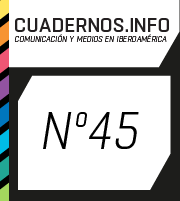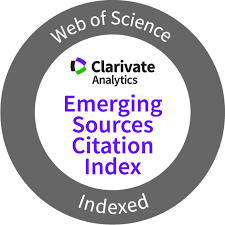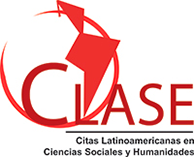A discrete proposal: Appeals to the social networks of popular programmes in Europe
DOI:
https://doi.org/10.7764/cdi.45.1562Keywords:
digital terrestrial television, social media, hashtag, fiction, information, info-showAbstract
This article shows the results of an empirical research dealing with on-screen appeal strategies calling for the use of social networks during the most-watched programmes on general DTT channels in France, Germany, Italy, Spain and the United Kingdom in 2016-2017. The aim is to identify how the attention of social audiences is sought while the broadcast is taking place and what form these appeals acquire in the narrative and structure of formats. The content analysis shows the resources and strategies used, the differences according to country, channel ownership and programme genre, and the hegemonic use of hashtags and the unique strategies of info-show in commercial channels.
Downloads
References
Bourdon, J. (2000). Live television is still alive: On television as an unfulfilled promise. Media, Culture & Society, 22(5), 531-556. https://doi.org/10.1177/016344300022005001
Bustamante, E. (2002). Televisión: errores y frenos en el camino digital (Television: mistakes and brakes on the digital path). In E. Bustamante (Coord.), Hacia un nuevo sistema mundial de comunicación: industrias culturales en la era digital (Towards a new global communication system: cultural industries in the digital age) (pp. 213-264). Madrid: Gedisa.
Cammaerts, B. & Carpentier, N. (2007). Reclaiming the media: communication rights and democratic media. Bristol: Intellect Ltd.
Carpentier, N. (2012). The concept of participation. If they have Access and interact, do they really participate? Revista Frinteiras – estudos midiáticos, 14(2), 1-14. https://doi.org/10.4013/fem.2012.142.10
Couldry, N. (2004). Liveness, “reality” and the mediated habitus from television to the mobile phone. The Communication Review, 7(4), 353-361. https://doi.org/10.1080/10714420490886952
Chalaby, J. (2011). The making of an entertainment revolution: how the TV format trade became a global industry. European Journal of Communication, 26(4), 239-309. https://doi.org/10.1177/0267323111423414
Deller, R. (2011). Twittering on: Audience research and participation using Twitter. Participations, 8(1), 216-245. Retrieved from https://www.participations.org/Volume%208/Issue%201/deller.htm
Doughty, M., Rowland, D., & Lawson, S. (2011). Co-viewing live TV with digital backchannel streams. In Proceddings of the 9Th International Interactive Conference on Interactive Television – EuroIT’ 11. New York: ACM Press.
Han, E. & Lee, S. (2014). Motivations for the complementary use of text-based media during linear TV viewing: An exploratory study. Computers and Human Behavier, 32, 235-243. https://doi.org/10.1016/j.chb.2013.12.015
Fiske, J. (1987). Television Culture. London: Methuen.
Franquet, R., Gómez, G., Coromina, Ò., & Guerrero, S. (2018). Info-show en la televisión europea: En busca del engagement social de la audiencia (Info-show in European television: searching for the social engagement of the audience). adComunica. Revista Científica de Estrategias, Tendencias e Innovación en Comunicación, 15, 141-163. https://doi.org/10.6035/2174-0992.2018.15.8
Franquet, R. & Villa Montoya, M. I. (2014). Cross-Media Production in Spain’s Public Broadcaster RTVE: Innovation, Promotion, and Audience Loyalty Strategies. International Journal of Communication, 8, 2031-2322. Retrieved from https://ijoc.org/index.php/ijoc/article/view/2621
García-Galera, C. & Valdivia, A. (2014). Media Prosumers. Participatory Culture of Audiences and Media Responsibility. Comunicar, 22(43), 10-13. https://doi.org/10.3916/C43-2014-a2
García-Muñoz, N. & Larrègola, G. (2010). La TDT en Europa: modelos de programación (TDT in Europe: programming models). Telos, 84, 65-72. Retrieved from https://telos.fundaciontelefonica.com/archivo/numero084/modelos-de-programacion/?output=pdf
Gillan, J. (2010). Television and New Media. Must- click TV. New York: Routledge.
Greer, C. F. & Ferguson, D.A. (2011). Using Twitter for promotion and branding: A content analysis of local television Twitter sites. Journal of Broad- casting & Electronic Media, 55(2), 198-214. https://doi.org/10.1080/08838151.2011.570824
Hallvard, M. (2011). Defining public service beyond broadcasting: the legitimacy of different approaches. International Journal of Cultural Policy, 17(1), 52-68. https://doi.org/10.1080/10286630903049912
Harrington, S., Highfield, T., & Bruns, A. (2013). More than a backchannel: Twitter and television. Participations, 10(1), 405-408. Retrieved from https://www.participations.org/Volume%2010/Issue%201/30%20Harrington%20et%20al%2010.1.pdf
Hibberd, M. (2003). E-Participation, Broadcasting and Democracy in the UK. Convergence: The International Journal of Research into New Media Technologies, 9(1), 47-65. https://doi.org/10.1177/135485650300900104
Holsti, O. R. (1969). Content analysis for the social sciences and humanities. New York: Addison-Wesley.
Jenkins, H. (2006). Convergence Culture: Where Old and New Media Collide. New York: New York University Press.
Jenkins, H. (2014). Rethinking ‘rethinking convergence/culture’. Cultural Studies, 28(2), 267-297. https://doi.org/10.1080/09502386.2013.801579
Ji, Q. & Raney, A. A. (2015). Morally Judging Entertainment: A Case Study of Live Tweeting during Downtown Abbey. Media Psychology, 18(2), 221-242. https://doi.org/10.1080/15213269.2014.956939
Larsson, A. (2013). Tweeting the viewer—use of Twitter in a talk show context. Journal of broadcasting & electronic media, 57(2), 135-152. https://doi.org/10.1080/08838151.2013.787081
Livingstone, S. & Lunt, P. (1992). Expert and Lay Participation in Television Debates: An Analysis of Audience Discussion Programmes. European Journal of Communication, 7(1), 9-35. https://doi.org/10.1177/0267323192007001002
Moe, H., Poell, T., & van Dijck, J. (2016). Rearticulating Audience Engagement: Social Media and Television. Television & New Media, 17(2), 99-107. https://doi.org/10.1177/1527476415616194
Morley, D. (1992). Television, Audiences and Cultural Studies. London: Routledge.
Morrison, M. & Krugman, D. M. (2010). A Look at Mass and Computer Mediated Technologies: Understanding the Roles of Television and Computers in the Home. Journal of Broadcasting and Electronic Media, 45(1), 135-161. https://doi.org/10.1207/s15506878jobem4501_9
Pond, P. (2016). Twitter Time: A temporal analysis of tweet streams during te- levised political debate. Television & New Media, 17(2), 142-158. https://doi.org/10.1177/1527476415616190
Prado, E. (2002). Televisión en la era digital: homogeneización versus diversidad (Television in the digital age: homogenization versus diversity). Telos, 51, 45-49. Rerieved from https://telos.fundaciontelefonica.com/archivo/numero051/television-en-la-era-digital-homogeneizacion-versus-diversidad/?output=pdf
Prado, E. (2010). Del flujo al stock. Desafíos de la digitalización para las políticas de comunicación (From flow to stock. Challenges of digitalization for communication policies). In A. Miranda, G. Santagata, & A. Guérin (Eds.), Pensar los medios en la era digital. Iberoamérica frente al desafío de la convergencia (The media in the digital age. Latin America facing the challenge of convergence) (pp. 33-54). Buenos Aires: La Crujía.
Prado, E. & Delgado, M. (2010). La televisión generalista en la era digital. Tendencias internacionales de programación (General TV channels in the digital age: international trends in programming). Telos, 84, 52-64. Retrieved from https://telos.fundaciontelefonica.com/archivo/numero084/tendencias-internacionales-de-programacion/?output=pdf
Rossi, L. & Giglietto, F. (2016). Twitter Use During TV: A Full-Season Analysis of #serviziopubblico Hashtag. Journal of Broadcasting & Electronic Media, 60(2), 331-346. https://doi.org/10.1080/08838151.2016.1164162
Sørensen, I. E. (2015). The revival of live TV: liveness in a multiplatform context. Media, Culture & Society, 38(3), 381-399. https://doi.org/10.1177/0163443715608260
Toffler, A. (1980). The third wave. New York: Bantam Books.
Urquiza García, R. (2009). Televisión digital terrestre en Europa y Estados Unidos: una comparativa entre modelos de negocio (Digital terrestrial television in Europe and United States: a comparison between business models) (Doctoral dissertation). Retrieved from https://eprints.ucm.es/9573/
van Dijck, J. (2013). The Culture of Connectivity. A Critical History of Social Media. New York: Oxford University Press.
van Dijck, J. & Poell, T. (2015). Making Public Television Social? Public Service Broadcasting and the Challenges of Social Media. Television & New Media, 16(2), 148-164. https://doi.org/10.1177/1527476414527136
van Es, K. (2016). Social TV and the participation dilemma in NBC’s The Voice. Television & New Media, 17(2), 108-123. https://doi.org/10.1177/1527476415616191
Wilson, S. (2015). In the Living Room: Second screens and TV audiences. Television & New Media, 17(2), 174-191. https://doi.org/10.1177/1527476415593348














